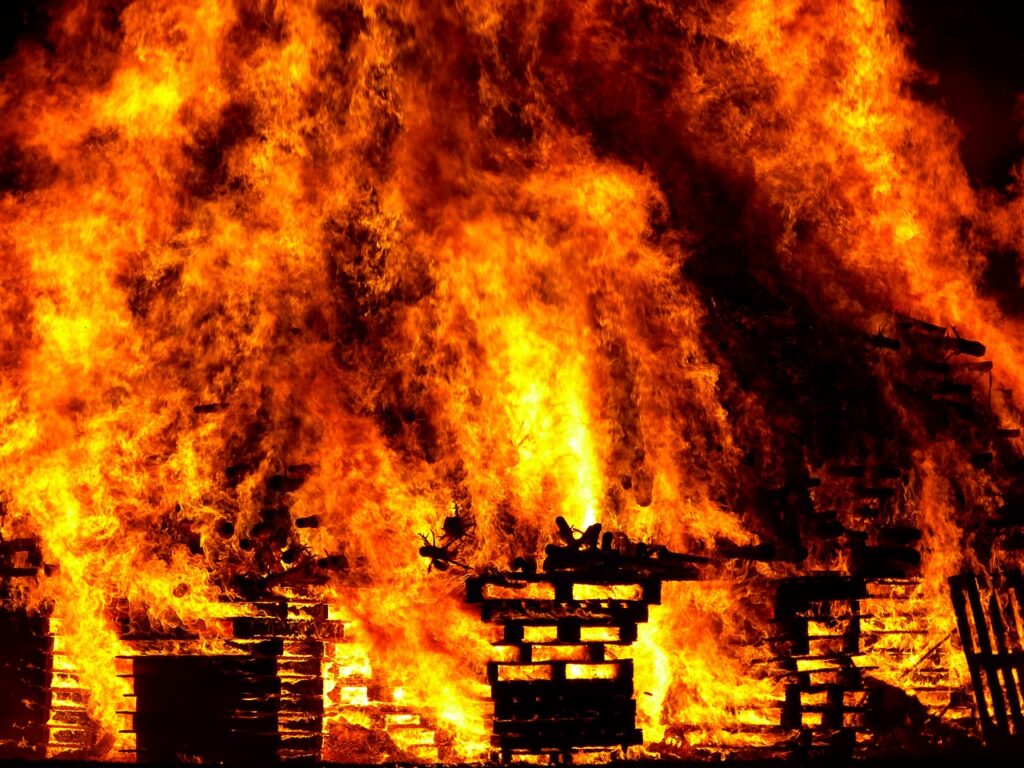Los Angeles Burns
The wildfires besieging Los Angeles are being exacerbated by climatic and weather conditions that create “fire weather,” a phenomenon on the rise.
More than 1,500 structures charred, at least 5 deaths, and over 130,000 people under mandatory evacuation orders—stretching from the Pacific Coast to inland areas. These are the staggering and ever-evolving numbers from at least four simultaneous wildfires ravaging Southern California, driven by winds and forming a ring of fire around the cities of Los Angeles and Santa Monica. Let’s delve deeper into the scale of this phenomenon, focusing particularly on the causes behind it.
Palisades Fire: Los Angeles’ Worst Wildfire Ever
Firefighters are battling at least four out-of-control wildfires (with two smaller blazes reported as of Wednesday evening). The Palisades Fire, on the Pacific Coast, is consuming an inhabited area about 30 kilometers west of Downtown Los Angeles. The chain of fires began here on the afternoon of Tuesday, January 7, fueled by hot winds sweeping the region. The blaze has already destroyed over 11,800 acres (4,700 hectares) of land.
To the east of Los Angeles, in Eaton Canyon, the Eaton Fire has reached the city of Pasadena and, in just one night (Wednesday, January 8), advanced by 10,000 acres (about 4,000 hectares). Further north, in the San Fernando Valley, the Hurst Fire has grown to 850 acres (344 hectares). The smallest of the fires, the Sunset Fire, has burned at least 60 acres (24 hectares) across hiking trails and luxury villas in the Hollywood Hills.
Anthony Marrone, the Los Angeles County Fire Chief, stated, “There aren’t enough firefighters in LA County to handle four separate fires of this magnitude,” adding that the county was prepared for “one or two wildfires, but not four, especially with these sustained winds and low humidity.” Firefighters are struggling to find water for hydrants, and due to low water pressure in the pipelines, tap water in many affected areas has become unsafe to drink.
Wildfires in Los Angeles: The Role of Santa Ana Winds
The hot, intense winds fueling the flames are known as Santa Ana winds or Devil winds. They are a meteorological phenomenon in Southern California where “strong, hot, and dusty winds blow from the inland desert regions toward the Pacific Coast around Los Angeles” (as defined by the National Weather Service). In the fire-affected areas, these winds have reached speeds of up to 129 km/h (80 mph), contributing to the rapid spread of the flames.
Santa Ana winds are common during the cold season and are caused by high-pressure systems (typically associated with fair weather) over the southwestern U.S. deserts. These systems push air through the mountains of Southern California toward a low-pressure area (unstable weather) over the Pacific Coast. This time, however, they are accompanied by extremely strong winds in the upper atmosphere, which not only funnel through the mountains but also pass over them before descending onto Los Angeles.
Wildfires in Los Angeles: The Role of Drought (on Dense Vegetation)
Typically, wet autumns and winters mitigate the negative effects of Santa Ana winds. Unfortunately, this year, the rain has yet to arrive: Southern California has endured months of drought, drying out vegetation and turning it into tinder. Since May 2024, the region has received no more than 2.5 mm of rain. Additionally, there was an abundance of vegetation to dry out: 2023 was a very rainy year that encouraged plant growth, the same plants that 2024 has left parched. The fire, spread by the winds (the exact ignition source is still under investigation), has thus found ample fuel to burn.
The Boiling Ocean and Its Role in the Wildfires
The aforementioned conditions are becoming increasingly likely due to climate change. This includes the exceptionally high sea surface temperatures recorded in the Pacific Ocean, which have contributed to the recent drought by creating a high-pressure front that has blocked moist air from reaching Southern California.
Originally posted 2025-01-09 16:05:36.

